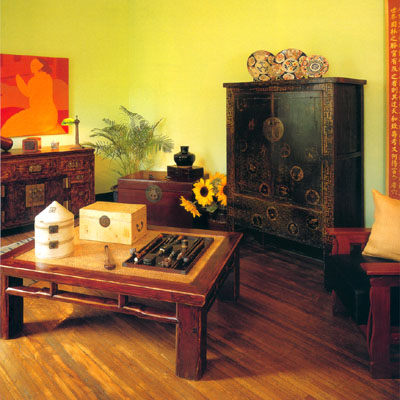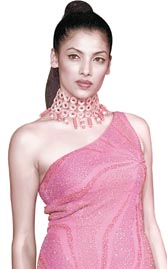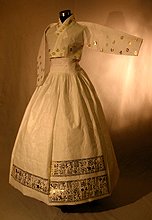Difference between revisions of "Sandhya Lalloesingh"
| Line 1: | Line 1: | ||
[[Object of the future]] | |||
== East meets West fashion == | == East meets West fashion == | ||
Revision as of 12:09, 15 May 2006
East meets West fashion
Below I describe the future of Western fashion that will be more and more inspired by Eastern fashion. East meets West in fashion design; inspired by the past, stimulated by the future.
The trend
People from different countries have their own clothes that represent their culture and way of life. Nowadays you see the influences of Eastern fashion more and more in Western fashion.
Fashion designers will continue to use more elements of both East and West cultures to create a totally new and different style in the future. This blend of East and West in clothing results in a wardrobe with more diversity and flexibility.
Anthropological findings has shown that Asian clothes nowadays are more based on religious and historical dresses. Chinese clothes were historically hand-dyed paper garments. This lead to another type of needle embroidery today, known as Paper Mache work.
Western clothing will stay more convenient, practical and easy to wear, but you will see that Western fashion designers get inspired by the more colourful, embroidered, shiny, traditional clothes from the Asian culture.
Fabrics
The Asian style and design will play a big role in Western fashion. Production in Eastern countries is cheaper, but besides that, luxury Asian fabrics will also become more popular in the West.
Take for example the fabric Pashmina from India. In the past, only rich and elite had the privilege of enjoying this luxurious fabric. Today Kashmir Pashmina is the finest, most original and authentic cashmere from Tibet and other higher reaches of Himalayas. The making of Kashmir cashmere is labour intensive and on an average it takes 200-250 hours of man's work to make a single pure plain Pashmina shawl without embroidery. A more exclusive Kashmir fabric is Shahtoosh. A fine Shahtoosh shawl passes through a finger ring.
Other famous Kashmir fabrics are woollens and silk. The woollen shawls are within the reach of the most common people, while Shahtoosh is once-in-a-lifetime purchase. The woollen shawls have made the Kashmiri shawls very popular because of the embroidery.
Future
So in the future we will see that more imported materials (cheap and luxury) will be used. Today Ralph Lauren sells exclusive Kashmir sweaters for almost 500 dollar per piece! Also the Western clothes will show more Asian elements. For example the traditional Pakistani Kameez (long shirt) is worn nowadays also as long, decorated shirt in the West.
And you can already find bags in the shops with decoration of little pieces in mirrors (influenced by Rajasthan in India). But besides fashion, we will also see Asian elements in home interior, furniture, floor coverings, (baby) blankets, embroidered wall hangings, robes, accessories like handed-embroidered hats, scarves and gloves.

http://app1.chinadaily.com.cn/star/2001/1115/fa13-1.html
http://www.lib.uconn.edu/about/exhibits/eastwest/eastwest.htm
http://www.ganga-jal.com
http://www.mymanchesteronline.co.uk/SiteAdmin.asp?UserSiteId=833
http://www.101thingstodo.com/hawaii/oahu/shopping/shopasiapolynesia/index.php
http://www.imports4you.com/pa1
http://www.didriks.com/s.nl/sc.12/category.660
http://www.ladakh-kashmir.com/jammu-kashmir-information/kashmir-fabric.html
http://www.kashmirarts.com

